Rocaille, the story of an ornament
25.01.21
Rococo ornament , often discussed in contrast to antiquity, emerged in Baroque Europe and developed to the point of transforming the very structure of furniture and objects. The pieces in the Atena Gallery, created between 1720 and 1890, highlight the extraordinary vigor of this ornamental style and its power to reinvent itself for over a century. The spontaneity of an inspiration freed from all symmetry and formal rules is evident in carved furniture, while the extreme sophistication of the compositions is revealed in small pedestal tables, clocks , lighting fixtures , and other small collectibles.
Louis XV style commode, adorned with Rococo gilt bronze mounts
What does the term "rocaille" mean?
Rocaille ornament in vogue in the 1730s, characterized by the representation of elements of nature (shells, rocks, caves, foliage...) in convoluted forms.
Rocaille is the title given to a print made in 1737 by the French architect and engraver Claude Augustin Duflos the Younger (1703-1770), after François Boucher . Of a series of four prints, this is the only one that does not include any human figures. Instead, the composition features an assemblage of seashells and plant ornaments with a garden in the background. The overall effect is asymmetrical, fragmented, and whimsical. Each element is inspired by nature but transformed by the artist's imagination.
Rockwork, imitating the rugged reliefs of natural rocks and generally embellished with seashells, was used to create artificial grottoes and fountains in parks and gardens. This tradition of rockwork grottoes and seashells means that the two terms are often associated. The interest in seashells in 18th-century France was also due to the development of natural history collections and cabinets of curiosities , filled with rare and unusual items: fossils, thunderstones, stuffed animals, shells, seashells, herbaria, among many others. Artists, in turn, drew inspiration from the most picturesque shells and those with the most irregular shapes, such as the Murex—used to extract purple dye—or the Chicoreus, which was particularly sought after.
What is the rocaille style?
The Rococo style refers to the early period of the Louis XV style (1723-1750) , characterized by opulent naturalistic decoration, which reached its peak around 1730. It drew inspiration from artificial grottoes and recreated rock formations arranged in asymmetrical compositions. This decoration, which marks the beginning of the Baroque, is complemented by shells, geological elements, cascading foliage, jagged palmettes, and floral motifs in carved wood, bronze, and, later, porcelain imported from Meissen , all within compositions of asymmetrical curves and counter-curves.

Rococo porcelain consoles, in the Meissen style
Under Louis XV, the Rocaille style invaded furniture and objets d'art. This style, overloaded with ornamentation and widespread throughout Central and Western Europe around the middle of the century, was nicknamed "Rococo" . In France, the artists who practiced it—the ornamentalists Juste Aurèle Meissonnier (1695-1750) and Jean Bérain (1640-1711) , and the sculptors and engravers Jacques Caffieri (1673-1755) and Jean-Claude Duplessis (c. 1690-1774) —created original designs, full of fantasy and the picturesque, which went against classicism.
Under the influence of French Rococo, the Rocaille style spread to other European countries in the second half of the century. In England, it influenced the Chippendale style (1754-1770) . In Germany, it became prominent thanks to the architect François de Cuvilliés (1695-1768) , a draftsman from Hainaut in the service of the Elector of Bavaria, whose ornamental style, rich in plant motifs, spread throughout Europe thanks to a series of engravings published in 1738. In Italy, the Venetian Republic adopted it in a theatrical manner. In Spain, Austria, and Bavaria, it took the form of a late Baroque style , characterized by pronounced asymmetry, which borrowed elements from French Rococo.
Unlike in other European countries such as England, the Rococo style became firmly established in France, where it flourished until 1770, when Neoclassicism and the Greek style became dominant. The Rococo style and ornamental practices were then criticized in the face of the new idea of a "regeneration of the arts" modeled on Rome, Herculaneum, or Athens.
After the Neoclassical period, which saw a straightening of curves, the Rococo style was revived by the Historicist movement , which drew its sources and inspiration from past eras. The styles of the Ancien Régime were widely imitated during the Second Empire, particularly the Louis XV style. From the mid-19th century onward, numerous pieces of furniture and objets d'art in the Louis XV style , or inspired by Rococo aesthetics .
The rocaille style in the decoration of furniture and art objects
Popular from the 1720s onward, the Rococo aesthetic spread to all areas, but it found its most brilliant expression in goldsmithing , tableware , ceramics , and interior design . The Baroque-style productions of the Meissen Manufactory are a perfect example of this in ceramics. In goldsmithing, Rococo ornamentation abundantly adorns shell-shaped boxes, candlesticks and wall sconces , andirons , and more . These small, precious objects, along with drawings and prints, contributed to the dissemination and success of the style.
In furniture , the Rococo style is meant to create a sense of wonder. Asymmetrical, sinuous, and intricately shaped, it features shells and other jagged natural forms, checkered backgrounds with small flowers, winged cartouches, shell palmettes, openwork shells, mascarons, scrolled feet, and pierced decorations. Chests of drawers , consoles , and desks are adorned with Rococo cartouches, bronze mounts, and gadrooned leaves, demonstrating great imagination and freedom of execution. This style was widely imitated in the 19th century to create salons in the Louis XV or Louis XVI styles.
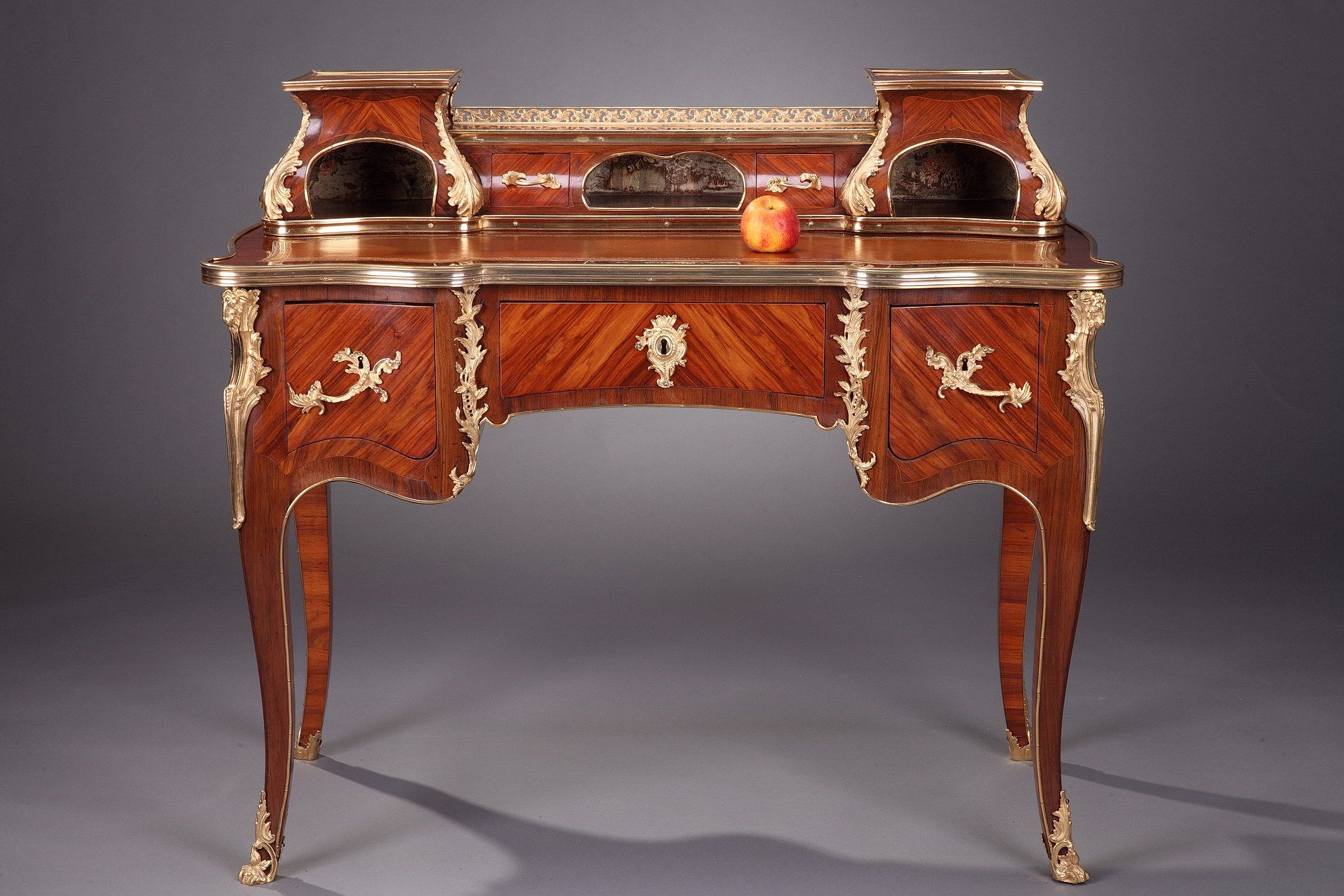 A Louis XV style lady's marquetry desk decorated with cascading and jagged foliage.
A Louis XV style lady's marquetry desk decorated with cascading and jagged foliage.


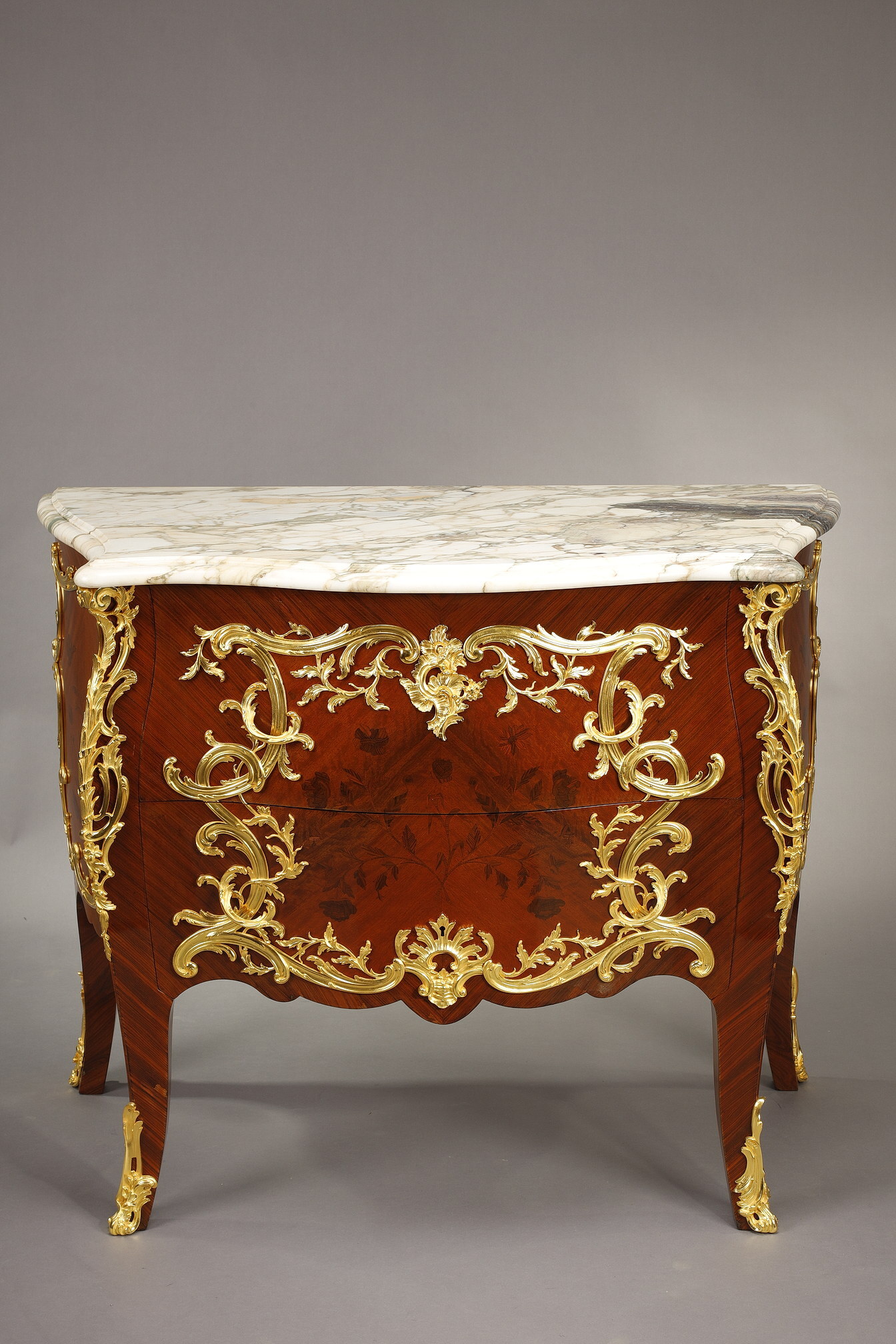
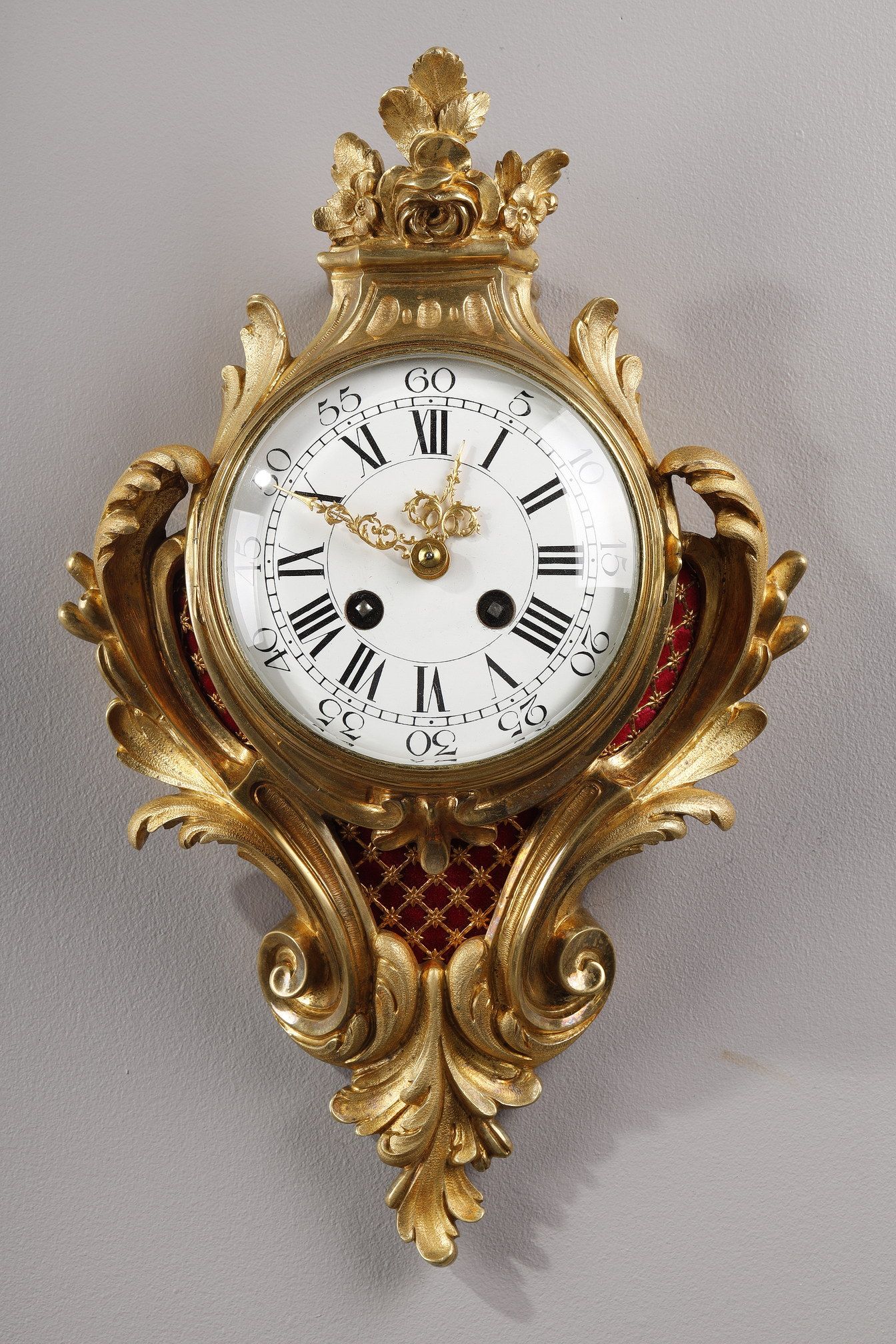 Small Louis XV style cartel clock with rocaille decoration
Small Louis XV style cartel clock with rocaille decoration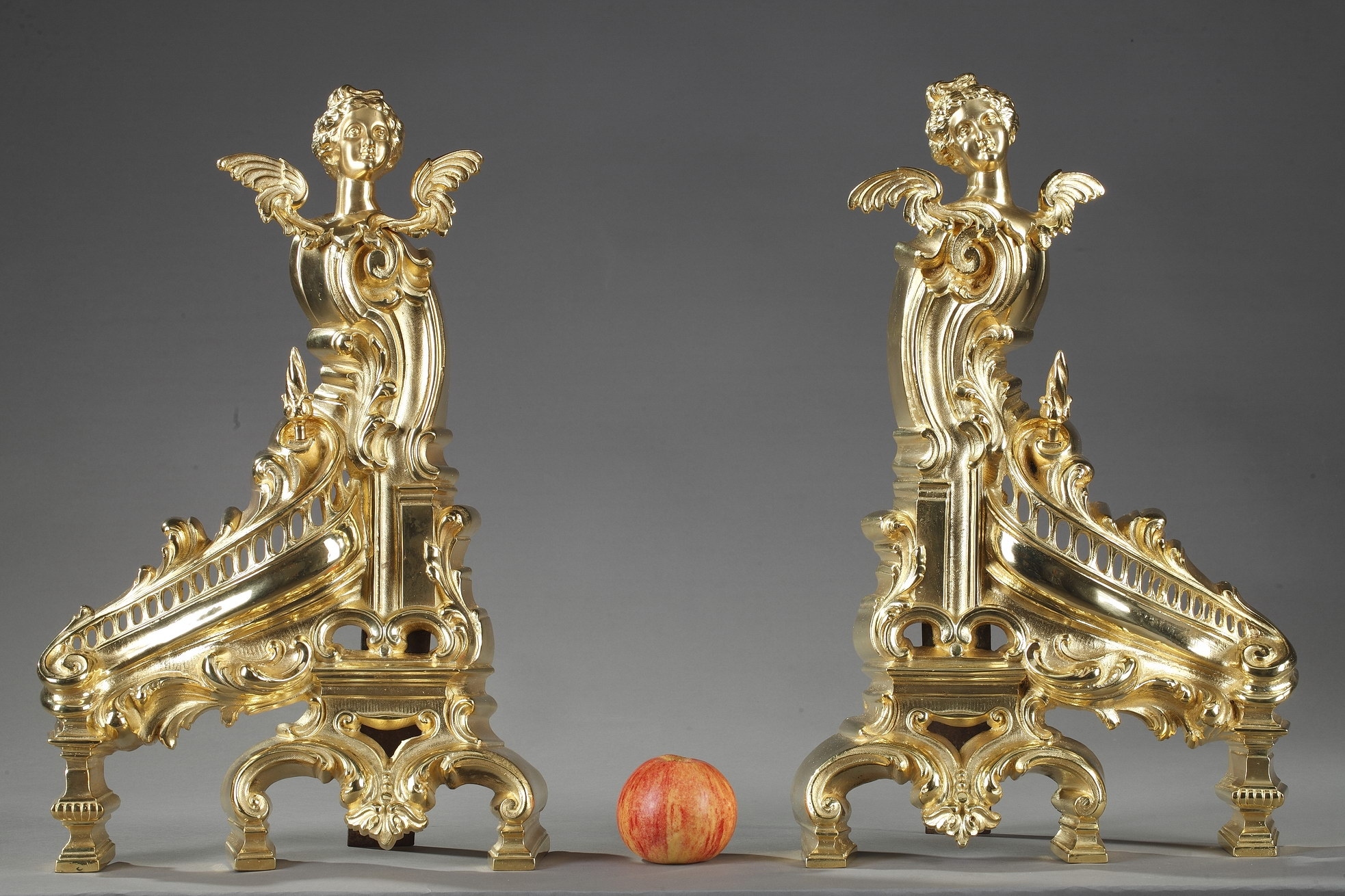

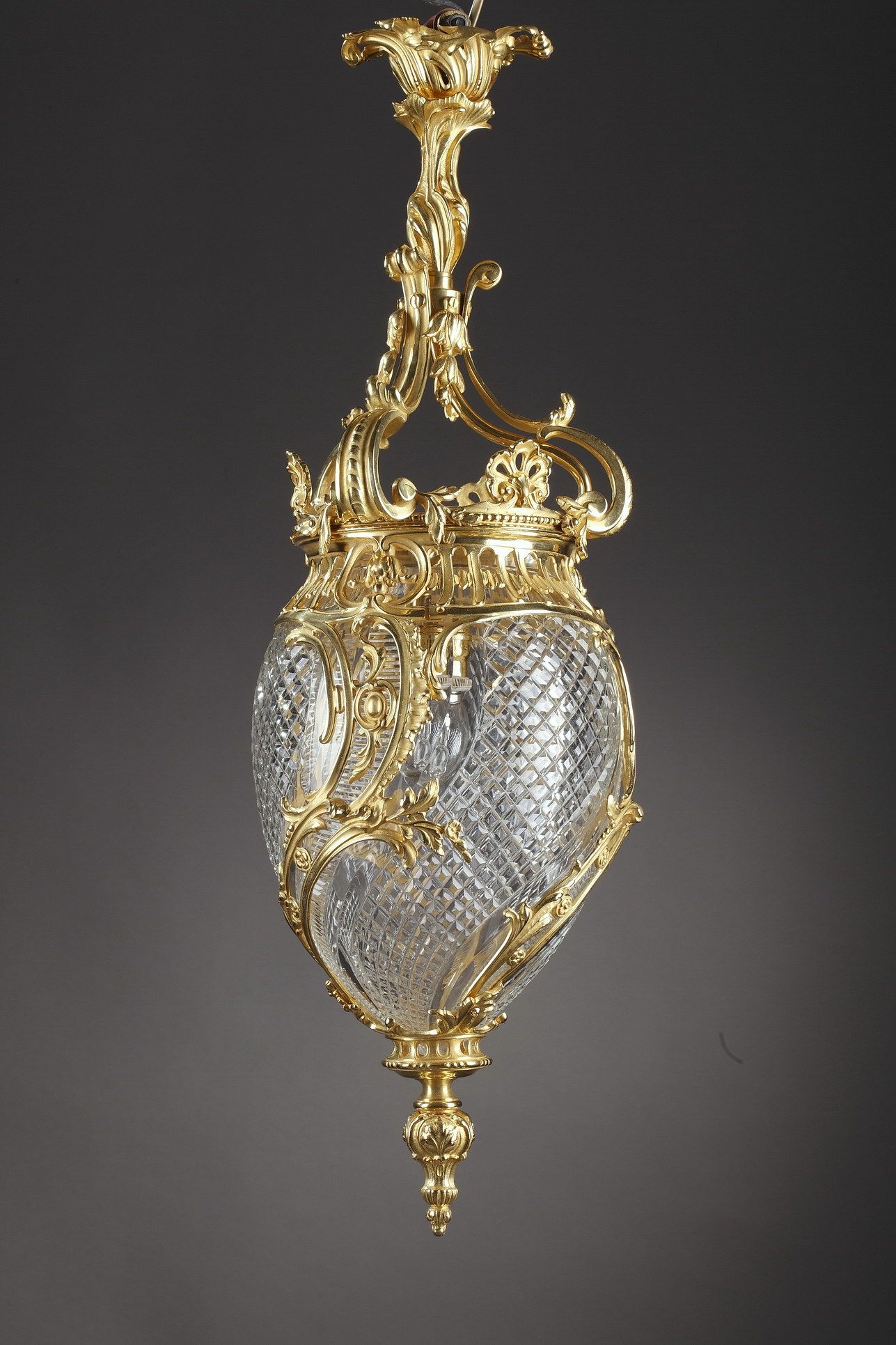 Louis XV style ovoid lantern
Louis XV style ovoid lantern